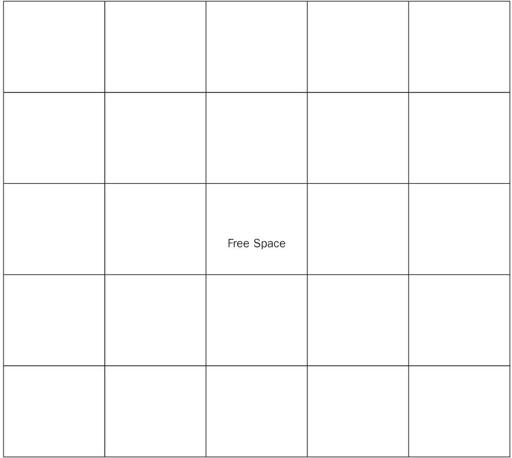Teaching the Common Core Math Standards With Hands-On Activities, Grades 3-5 (80 page)
Read Teaching the Common Core Math Standards With Hands-On Activities, Grades 3-5 Online
Authors: Judith A. Muschla,Gary Robert Muschla,Erin Muschla-Berry
Tags: #Education, #Teaching Methods & Materials, #Mathematics, #General

Measurement and Data: 5.MD.1
“Convert like measurement units within a given measurement system.”
1. “Convert among different-sized standard measurement units within a given measurement system (e.g., convert 5 cm to 0.05 m), and use these conversions in solving multi-step, real-world problems.”
Background
To convert from one unit of measurement to another within systems of measurement, students must be familiar with equivalent measures. Common measures are provided in the reproducible, “Measures,” which you may distribute to your students if you feel it is necessary.
To convert from a larger unit to a smaller unit, students should multiply. For example, to change 300 minutes to seconds, multiply 300 by 60 because 1 minute equals 60 seconds. Therefore, .
.
To convert from a smaller unit to a larger unit, students should divide. For example, to change 300 minutes to hours, divide 300 by 60 because 1 hour equals 60 minutes. Therefore, .
.
Activity 1: Measurement Bingo
Students will create a measurement bingo board by placing numbers from a Number Bank in each square on the board. The teacher will present a problem, requiring students to convert from one unit of measurement to another. If the answer is on the student's board, the student will cover the square that contains the answer with a counter. The first student to cover five squares in a row, column, or diagonal is the winner.
Materials
24 1-inch diameter (or smaller) counters, reproducibles, “Measurement Bingo” and “Measures,” for each student. Optional: One copy of reproducible, “Conversion Bank,” for the teacher.
Procedure
1.
Distribute copies of the reproducibles. Explain that “Measurement Bingo” contains a bingo board and a Number Bank. “Measures” contains various measurements that students will find helpful when converting units of measurement for bingo.
2.
Explain that students are to randomly fill in each square on their board with a number from the Number Bank. As they fill in a number, suggest that they cross out the number in the Number Bank so that they will not use the same number twice. Note that all numbers will be used to fill the board. They should not place a number in the free space.
3.
Explain the rules of the game. You will present measurements that students must convert. The problems are contained on the reproducible, “Conversion Bank.” (You may make a copy of this reproducible for yourself, or you may simply read the problems from that page in the book.) State the problems in order, starting with the first problem, and give students a few moments to convert the number to the specified unit. If they are correct, the answer will be on their board. Students who find the answer to the problem on their board should cover the square with a counter. Continue presenting problems until a student gets bingo by covering five squares in a row, column, or diagonal.
4.
After a student announces she has bingo, check her answers to make sure that she is correct.
Closure
Announce the correct answers and allow other students to make certain that their answers are correct, even though they may not have gotten bingo. Review any problems that students found confusing.
Answers
(1)
7
(2)
5
(3)
400
(4)
12
(5)
21
(6)
9
(7)
64
(8)
730
(9)
3
(10)
48
(11)
24
(12)
4,000
(13)
8
(14)
120
(15)
1
(16)
10
(17)
300
(18)
6,000
(19)
6
(20)
4
(21)
108
(22)
500
(23)
2,000
(24)
2
Activity 2: Measurement, Conversions, and Word Problems
Students will solve word problems that require them to convert units of measurement.
Materials
Reproducibles, “Measures,” and “Measurement Word Problems,” for students.
Procedure
1.
Distribute copies of the reproducibles. Explain that “Measures” contains various measurements and conversions. If necessary, students should refer to this sheet to help them solve the five problems contained on “Measurement Word Problems.”
2.
Explain that whenever students solve word problems involving measurement, they should make sure that all units are the same.
3.
Explain that when they convert from a larger unit to a smaller unit, they should multiply; when they convert from a smaller unit to a larger unit, they should divide.
4.
Suggest that students write an equation to help them solve the problems. Note that some problems have more than one question.
5.
Tell students that they should label their answers with the appropriate units.
Closure
Discuss the answers as a class. Ask volunteers to explain any equations and strategies they used to solve the problems. Review any problems that students found difficult.
Answers
(1)
The height of 6 layers of cinder block is 48 inches, which equals 4 feet.
(2)
Danielle worked on her homework for 80 minutes. She was 10 minutes short of what she told her brother.
(3)
Lila had enough ribbon. She needed 150 centimeters and had 30 centimeters left over.
(4)
Mrs. Harper purchased enough juice. She had 4 cups left over.
(5)
Jacob should pack 4 liters of water, which is equivalent to 4,000 milliliters. Since each bottle contains 500 milliliters, he should pack 8 bottles.
Measurement Bingo
Conversion Bank
1. | 2. | 3. |
4. | 5. | 6. |
7. | 8. | 9. |
10. | 11. | 12. |
13. | 14. | 15. |


